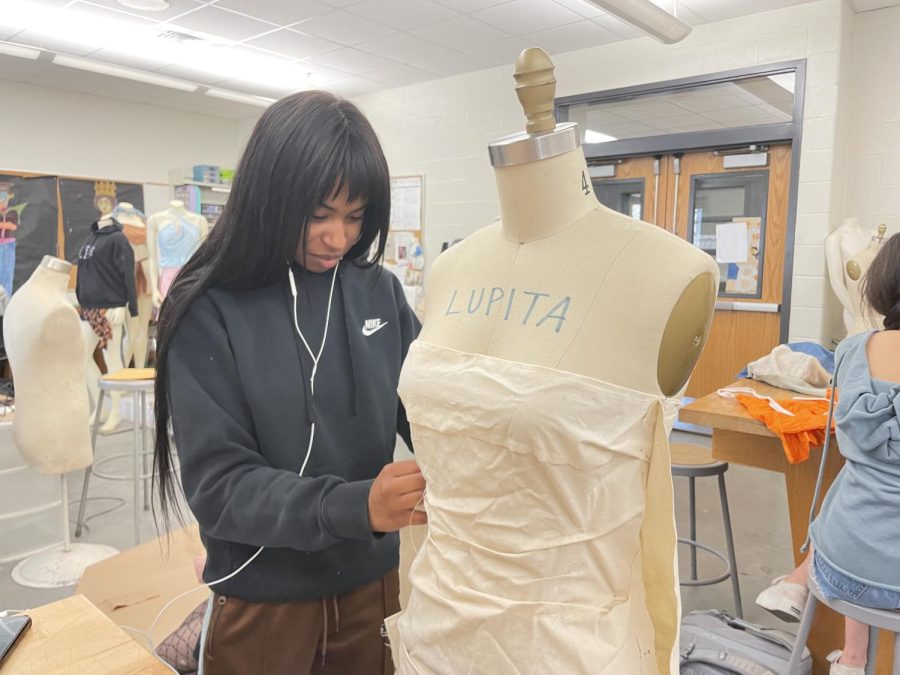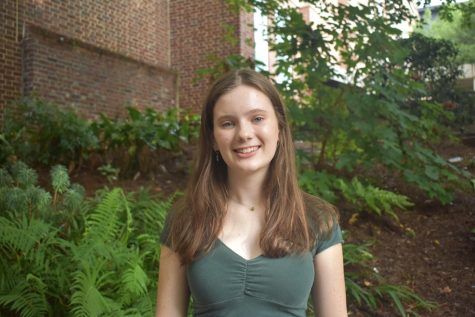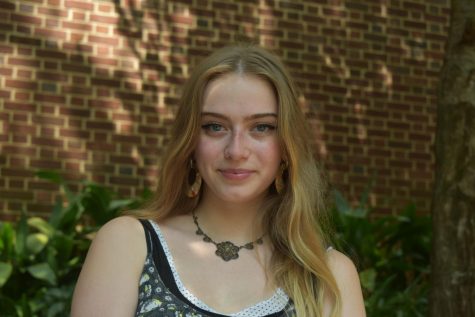Fashion show returns after two-year hiatus
Senior Olivia Phillips constructs an outfit for the upcoming fashion show “The Void.” The show is set to premiere on April 20 and feature student designs and models for the community.
April 27, 2022
The end of year Fashion Show: The Void — the fashion clubs and classes biggest event of the year — is approaching fast. And while audiences will only be appreciating the show for a few hours, models and design teams have been working since the beginning of the year to prepare.
Held in the Vincent Murray Auditorium on April 30, the show will feature work from students in the fashion design class and the Zujz Society, which is the official name for the fashion club.
“Everyone has been working really hard,” fashion design teacher Valerie Williams said. “We started back in August with the model call but the designers have had to kick it into third gear this second semester.”
Williams has been teaching fashion for 10 years at Midtown and has directed the fashion show eight times. Due to Covid-19 and virtual learning, the show was canceled during the past school years.
“We had to miss two years because of Covid; so, now junior designers make three to four outfits, senior designers make six outfits, and it’s normally more than that but because of quarantine, I’ve kind of edited it down for the first show back,” Williams said.
Junior Ezra Roberts, a model in the fashion show, first gained interest in modeling a few years ago when one of their dance teachers presented them with an opportunity.
“I got started after one of my previous dance teachers became a fashion designer, and she needed some models; so she asked all of us to come help. I’ve been doing it for a couple of years,” Roberts said. “I saw everyone doing the fashion show here my freshman year, and I thought it looked like fun; so, I decided to do it my junior year.”
The model call occurs in the fall and designers get to formulate what they want their pieces to look like and who they would like to model them.
“In the fall, when they come in, they do a mood board to get their ideas together,” Williams said. “They create design sketches around what they want to create: the mood, the theme, and then they begin making their patterns. Patterns are the basic form they use to create the garments themselves.”
Most of the work is done in class, but there is still a large time commitment outside of school needed for designers to complete their garments in time.
“It’s a time commitment, but I usually tell the students that if you utilize your class time then it’s pretty easy to get it done, but it takes a lot of self-discipline,” Williams said. “It is not for the faint of heart, you have to really love something about this process.”
Senior designer Grace Porges is excited about the show but is nervous because she could not learn from designers over the last two years because of Covid-19.
“It’s hard because we didn’t really learn the basics; so, we only really only learned different stitches, but we didn’t get to make actual garments,” Porges said. “So, now I have to jump in and make six garments and outfits, and I feel like I’ve missed a bunch of steps and a lot of practice.”
Instead of typically having two years to practice making garments for the fashion show, this year’s seniors were given the task of making six original pieces on their own.
“It’s like I have to re-teach myself everything, I feel like I’m always asking Ms. Williams for help because I didn’t get that basic introduction into making everything,” Porges said.
Aside from the difficulties, Porges enjoys the creative freedom being a designer gives her.
“It’s really fun because I think in school, not many people see the creative side of a lot of kids but I feel like the art programs here help emphasize everyone’s talents,” Porges said. “I’m making the clothes that I would almost want to wear to school; so, when everyone sees it, it’s going to be like my personal style being shown.”
While designers get to showcase their creative side with their pieces, models have the opportunity to express their creative side as well.
“It’s all in your brand and your walk, your personal look, things you can change like your makeup and your hair, the way you carry yourself, it’s all part of it,” Roberts said. “Of course you have to change all of that if the designer has a request, but if they don’t, then just be yourself.”
Though the final product is always a hit, Williams notes that there are setbacks behind the scenes while creating an entire collection.
“There are a lot of tears because they really are creating something that doesn’t exist; so, in doing that, they have to tweak things, buy fabric, do fittings and meet the models,” Williams said. “All of those things to make sure the garment they make suits the models that they are dressing.”
Despite the challenges, Williams admires the designers’ work throughout the year.
“I am the facilitator,” Williams said. “I guide them through the process of getting there. I lovingly yell at them when it’s not what it’s supposed to be because I want them to do the best job they can; so, they are proud of the work. I am always going to be proud of them, but I want them to be proud of what they put on the runway.”








